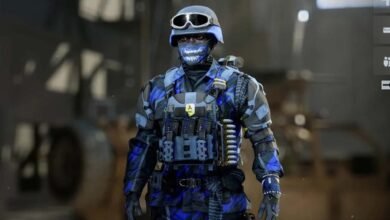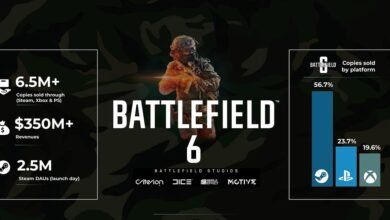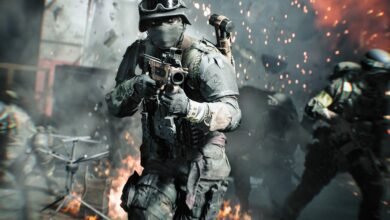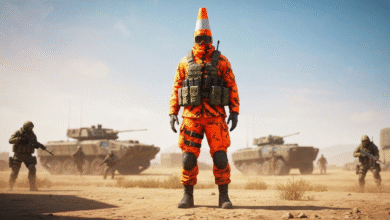Battlefield 6’s Honeymoon Phase Has Ended

▼ Summary
– Battlefield 6 launched successfully but faced backlash shortly after its first season and battle royale mode release, shifting player sentiment negatively.
– Players are upset about colorful new skins and the battle pass, feeling they disrupt the game’s military aesthetic and introduce live-service elements like ads and challenges.
– The new battle royale mode, Redsec, is integrated into the main game’s battle pass, forcing players to complete challenges in it, which has angered those uninterested in the mode.
– Season one introduced a small, poorly received map (Blackwell Fields) and a new small-scale mode (Strikepoint), disappointing fans who expected larger, more epic content.
– The game’s transition to a live-service model with multiple components has led to increased criticism, raising questions about EA’s willingness to adjust its roadmap in response to player feedback.
Battlefield 6’s initial wave of enthusiasm has noticeably cooled just weeks after its highly anticipated debut. The game kicked off with impressive player counts on Steam and widespread praise following a successful open beta, but the release of its first season and a new battle royale mode has shifted the community’s mood toward frustration and disappointment.
No single factor explains the surge of negative Steam reviews and fan backlash. Instead, a combination of grievances has surfaced. Many players are voicing strong objections to the introduction of vibrant cosmetic skins and a battle pass system, arguing these elements clash with the game’s original atmosphere. Others are dissatisfied with the season’s new map, Blackwell Fields, which they describe as disappointingly compact. The recently added Strikepoint mode also faces criticism for its small-scale design, while the free-to-play battle royale offering, Redsec, has sparked worries that development focus might drift away from Battlefield’s signature large-scale combat.
Cosmetic choices have been a sensitive topic for Battlefield 6 even before its official launch. A vocal part of the community had hoped the title would avoid the flashy, out-of-place outfits common in other modern shooters. Developers had previously indicated the game would steer clear of such aesthetics, a stance that even influenced competitors like Call of Duty to restrict skin transfers between titles. Now that season one is live, newly available skins have drawn mixed reactions. Some players find them too bright and inconsistent with a military setting, while others complain that universal skins usable across all classes could hinder quick identification during firefights. EA has shown some responsiveness, already toning down one skin’s vivid green accents, but striking a balance with cosmetics appears to be an ongoing challenge. Interestingly, another segment of players finds the new skins uninspired and not compelling enough to pursue through the battle pass.
The battle pass itself is another point of contention. Its implementation gives the game a distinctly “live-service” feel, complete with promotional pushes, progression targets, and time-limited unlocks. For veterans who cherished Battlefield’s traditional approach, this shift toward a model reminiscent of contemporary Call of Duty titles feels unwelcome. A popular post on the game’s subreddit captured this sentiment perfectly, comparing the season one update to an ad blocker failing.
Redsec, the new battle royale experience, has garnered a “Mostly Negative” rating on Steam, though interestingly, the criticism isn’t primarily about the mode’s quality. Many agree Redsec is competently made and enjoyable. The frustration stems from its integration into the broader Battlefield 6 ecosystem. Weekly challenges tied to the battle pass sometimes require participation in Redsec, forcing players who have no interest in battle royale to either engage with the mode or expend limited challenge rerolls. This mandatory crossover has generated significant resentment.
Compounding the issue is the map situation. Redsec features an expansive play area, something core Battlefield fans have been requesting since the beta. Yet the first post-launch map added to the main game, Blackwell Fields, is another compact location. Its tight corridors and limited sightlines make it a sniper’s paradise, while infantry movement feels tedious due to a lack of distinct landmarks. This contrast between the battle royale’s vast terrain and the main game’s continued small-scale offerings has not been well received.
The new Strikepoint mode, a round-based, single-life objective mode similar to seek-and-destroy, also feels like an odd fit. While such modes thrive in titles like Counter-Strike, its inclusion in Battlefield 6 seems redundant next to existing infantry-focused options like Team Deathmatch. For a series celebrated for its grand, chaotic battles, the emphasis on another confined mode has left many supporters questioning the direction.
It might be tempting to dismiss these complaints as coming from a noisy minority, and that is certainly part of the picture. However, the discontent appears broader. Even players who aren’t active on forums or social media have expressed reservations about season one. They commonly report disliking the new map, finding the new mode unnecessary, and feeling perplexed by the push into battle royale when they already have other preferred options in that genre.
So what does the future hold for Battlefield 6? Declaring the game dead would be an overstatement, it continues to command a substantial and active player base across all platforms. Nevertheless, the collective mood has unmistakably shifted. The title is no longer the nostalgic throwback to classics like Battlefield 3 that many had hoped for. It has fully embraced the live-service model, complete with a cosmetic store, a battle pass, and multiple interconnected components. This approach may secure greater revenue for EA, but it also invites heightened scrutiny and player pushback. The critical question remains whether the publisher will adjust its plans to address community concerns or proceed steadfastly on its original course.
(Source: Kotaku)





